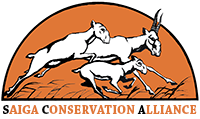On June 10, another saiga bred in the nursery was released in the Stepnoi Reserve, Russia. A transmitter attached to the animal’s neck will help track population movements and provide valuable data for science, because these rare antelopes are still poorly understood.

Last week, Astrakhan journalists and wildlife photographers once again visited the Stepnoi Reserve, located in the Limansky district, Astrakhan region, on the border with Kalmykia. For more than twenty years now, the last saiga population preserved in Russia has been protected here. Thanks to the disciplined work of the rangers, the number of saigas is gradually recovering.
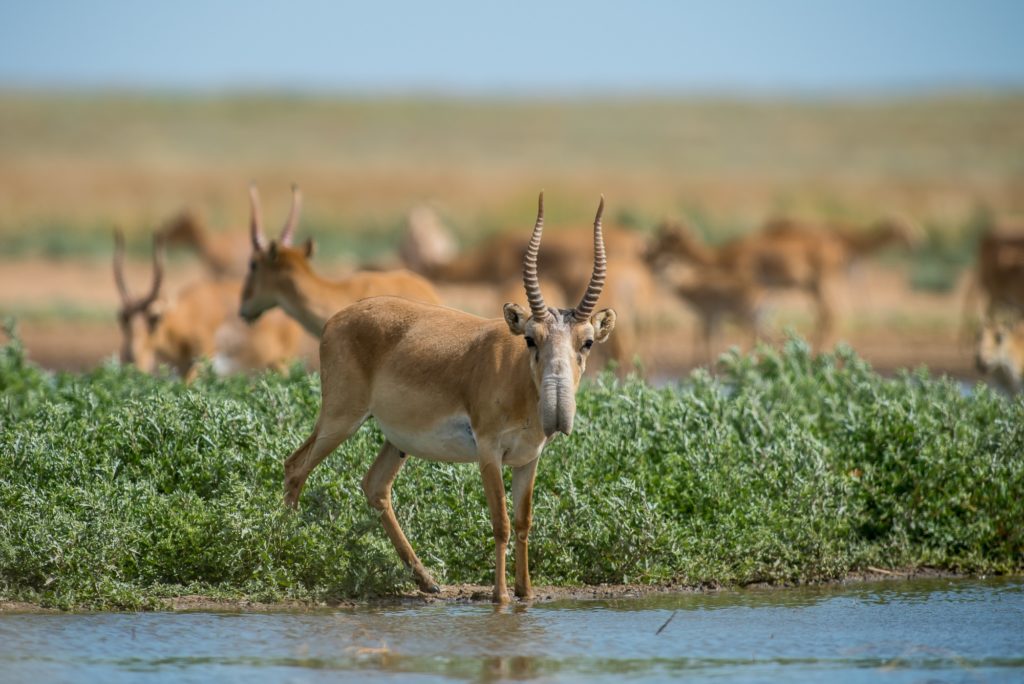
According to Maxim Ivanov, deputy head of the service for nature management and environmental protection of the Astrakhan region, at a minimum, the number of relic antelope decreased to 2.5 – 3 thousand heads. But now the population migrating on the territory of the Reserve and the nearby Black Lands Reserve is estimated at about 15 thousand animals. The administration of the Astrakhan region is taking all necessary measures to protect the saigas, and this is yielding tangible results.
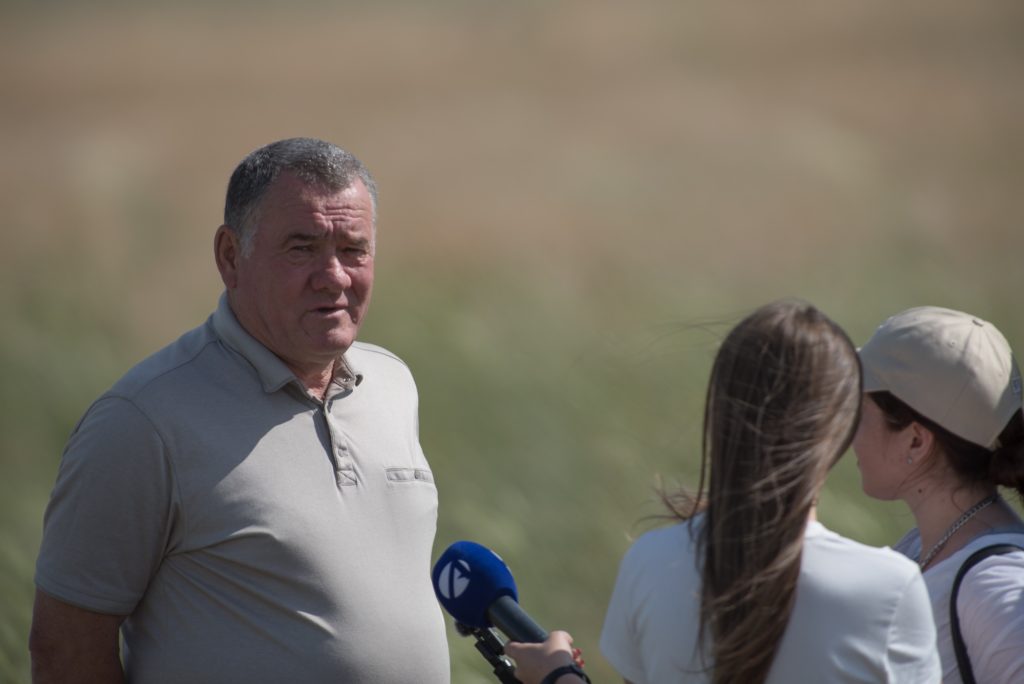
According to Vladimir Kalmykov, director of the Reserve, the inspectors managed to completely stop saiga poaching, which led previously to a catastrophic reduction in the number of animals. The last case of detention of a criminal with a poached saiga was already many years ago and outside the protected area. But now saigas are increasingly moving beyond the boundaries of the Reserve, and there their migrations are hindered by the increasingly popular electric fences.
The movements of the population are tracked using transmitters attached to the necks of animals that were born in the Saiga breeding center and were specially prepared for release into the wild. Saigas live very poorly in captivity, in enclosures, so they are rarely seen even in large zoos. Only in the Moscow Zoo there is a pair of saigas, but they do not bring offspring.
Every year, 1-2 saigas are released in the Stepnoi Reserve, born and raised in the nursery. The young male, who was set free last November, according to his transmitter, is now in Kalmykia. The fact that the coordinates of his location change regularly indicates that he is alive and well, which means that the scientific program for studying saigas is progressing well.
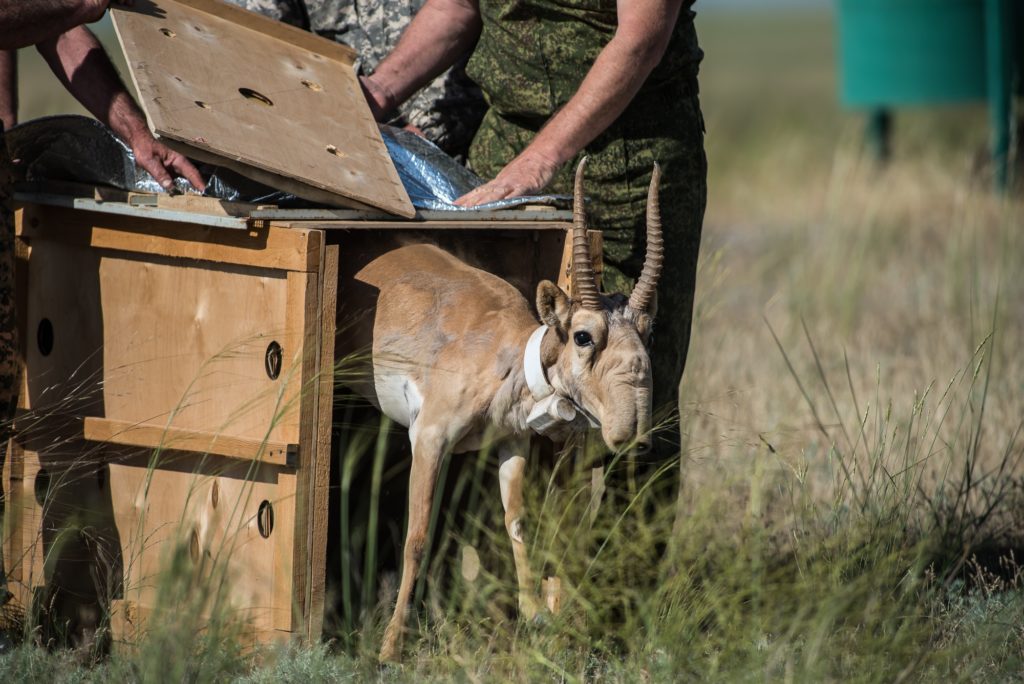
This time, a two-year-old male was released into the wild. The staff of the Reserve carefully carried it out in a special box, which prevents the animal from hitting the walls and injuring itself. And when the path to freedom opened up, the saiga jumped out of the box. At first, hesitantly and cautiously, he ran forward into the steppe, where thousands of herds of relatives were waiting for him.
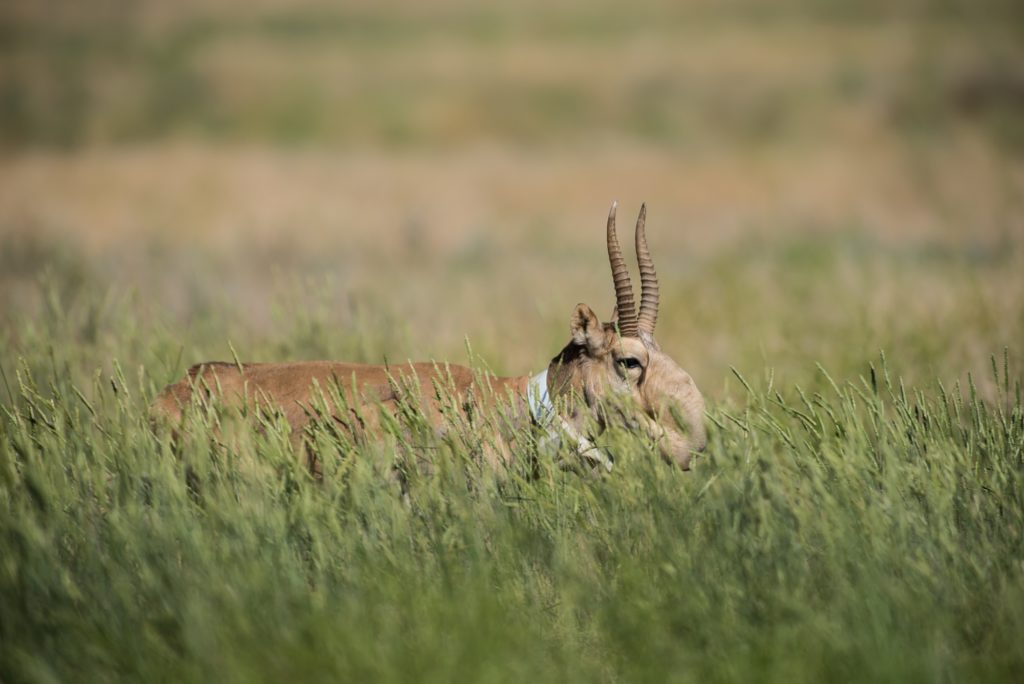
Photos by Vladimir Pankov, Stepnoi Reserve
Source: Punkt-A.info
